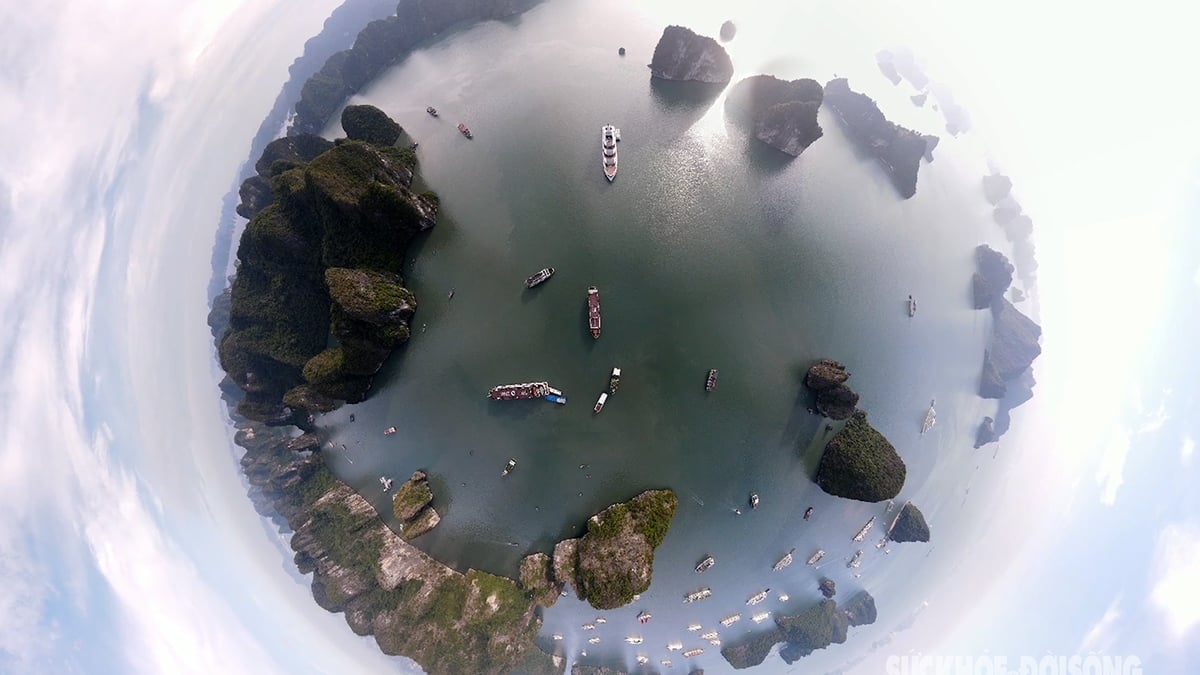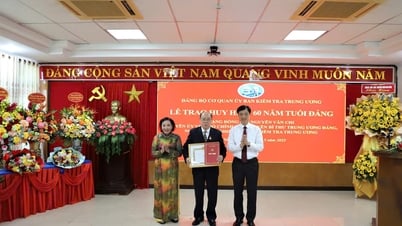Adding another piece to the banking ecosystem
The year 2025 marks a remarkable shift in the development strategy of many domestic commercial banks: From focusing on traditional credit growth, to seeking new "profit margins" through investing in the financial ecosystem, including insurance, fund management, companies and financial technology.
 |
Many banks are expanding their financial ecosystem by acquiring insurance, securities, and fund management companies to diversify their revenue sources. Illustrative photo |
Techcombank is an example. After parting ways with its partner, a large insurance company, the bank has built its own insurance “child” by contributing 80% of the capital with partners to establish a life insurance company with a charter capital of VND 1,300 billion called Techcombank Life Insurance Joint Stock Company (TCLife). According to the plan, in the first 2 years of operation, the company is expected to record a loss of VND 1,109 billion and from the 3rd year it is expected to record a profit of VND 605 billion, the 4th year is VND 357 billion, the 5th year is VND 597 billion and the 6th year is VND 845 billion. After 5 years of TCLife operation, Techcombank is expected to earn VND 1,195 billion in profit, a profit rate equivalent to 23.4%. TCLife's total assets in the first year were 728 billion VND, and are expected to reach 16,081 billion VND in the fifth year.
Emphasizing this business expansion plan, at the 2025 Annual General Meeting of Shareholders at the end of April, Mr. Jens Lottner - General Director of Techcombank - said that if nothing changes, by the end of 2025, Techcombank will introduce life insurance products to the market. The bank's goal by 2035 is to achieve insurance revenue that is 4 times higher than in 2024, reaching 84,000 billion VND.
Contributing capital to securities companies and fund management companies is the key goal of about 10 banks in 2025. For example, Maritime Commercial Joint Stock Bank (MSB) has just approved capital contribution and purchase of shares of securities companies and fund management companies to increase the financial ecosystem for the bank. Sacombank recently approved the Board of Directors' proposal on the plan to buy a securities company to become a subsidiary of the bank. It is expected that this bank will invest a maximum of VND 1,500 billion and own over 50% if the deal is successful.
Or SeABank , the 2025 shareholders' meeting just took place, the bank's shareholders also approved the plan to buy shares of ASEAN Securities Joint Stock Company so that this enterprise can become a subsidiary of SeABank.
Another bank, VPBank, has also finalized a plan to contribute capital, receive transfer of capital contributions or purchase shares so that a fund management company can become a subsidiary of the bank. Emphasizing to shareholders, Mr. Bui Hai Quan - Vice Chairman of the Board of Directors - said that to complete the bank's ecosystem, having a life insurance company and a fund management company are "two missing pieces". In addition, establishing an insurance company also helps VPBank take the initiative in its business model and customer care.
Assessing the plans to expand the ecosystem of banks, financial experts say that this shift is not surprising because after many years of growth in breadth, the banking system is entering a phase that requires improving capital efficiency, expanding non-interest income sources and increasing customer lifetime value. The fact that some banks are planning to acquire or strategically cooperate with insurance companies, securities companies, fund management companies, etc. are steps that clearly demonstrate that goal.
Increase “quantity” but don't forget “quality”
Developing additional financial services beyond the core banking service is not new. In fact, over the past 10 years, the most obvious combination in the financial market has been the distribution of insurance through banks with the "bancassurance" model. However, with this model, many banks have earned significant profits but also have a bad reputation due to the pressure to cross-sell products to increase revenue, causing many borrowers to react and the management agency to intervene. Therefore, instead of "making a quick buck" with large upfront fees from insurance companies, in 2025, the emerging trend is for banks to proactively take control or at least participate more deeply in the management of non-bank financial institutions, expanding the ecosystem to support closed financial services. This not only helps to better control product quality and sales processes, but also takes advantage of existing customer bases and synchronizes services.
However, although it is considered a profitable investment channel, not all banks are rushing to "spend money" to buy insurance companies or fund management companies. The market is witnessing caution in choosing partners and cooperation models. Some banks are focusing on deals where they can quickly integrate systems, take advantage of existing technology platforms, and have similar customer bases. Other banks are looking for partners to exploit niche markets such as digital health insurance, ESG investment funds, or specialized Fintech models.
The “trillion-dollar” deals of the “banking village” this year are not just a financial story. They reflect how banks position their role in the digital economy with the ambition of becoming a comprehensive financial corporation, providing customers with banking, investment, insurance, consumer loans and asset management transactions through a single application.
The trend of expanding the financial ecosystem of banks is forecasted to continue to grow strongly in the coming years, contributing to the sustainable development of the Vietnamese financial market. However, it is necessary to frankly admit that owning more subsidiaries is not too difficult for a commercial bank. What needs to be done is to develop healthily, transparently, and have a strong enough monitoring mechanism to ensure the safety of the entire banking system.
| Associate Professor Dr. Nguyen Huu Huan, lecturer at the University of Economics Ho Chi Minh City, said that currently, domestic financial institutions and banks have deeply participated in the insurance sector, especially life insurance, because this is a segment with much potential in the future. Bank insurance companies can take advantage of the abundant customer base in their ecosystem and partners to expand the market to boost revenue and profit. |
Source: https://congthuong.vn/khi-ngan-hang-khong-chi-lam-tin-dung-388510.html



![[Photo] Prime Minister Pham Minh Chinh chairs a meeting on the implementation of the Lao Cai-Hanoi-Hai Phong railway project.](https://vphoto.vietnam.vn/thumb/1200x675/vietnam/resource/IMAGE/2025/5/20/0fa4c9864f63456ebc0eb504c09c7e26)




























































































Comment (0)